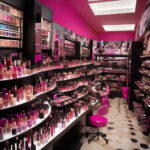Luxury brands are keenly investing in China’s art scene. Notable names like Chanel, Prada, Hermès, Loewe, and Louis Vuitton have been forming partnerships with local museums, artists, and art fairs. This initiative is part of their strategy to create buzz and attract customers in a market where luxury sales growth has slowed down.
Take Chanel, for instance. Since its 2011 exhibition at Shanghai’s Museum of Contemporary Art, the brand has refined its approach. Recently, it has partnered with the Power Station of Art in Shanghai, helping fund upgrades and hosting exhibitions. Chanel North Asia’s president, Renaud Bailly, calls it a “new chapter” for the brand, underlining its cultural commitment in China.
Similarly, other luxury brands aim to tap into China’s unique cultural landscape. For example, Louis Vuitton’s women’s pre-fall show featured collaborations with local artists like Sun Yitian. Prada, on the other hand, restored a historic Shanghai residence into a cultural space.
Yet, this approach comes with risks. Cultural missteps can lead to backlash, as Dior experienced in 2021 with an art piece deemed insensitive by Chinese audiences. Being culturally sensitive and authentic is crucial. Successful art initiatives need to resonate genuinely with local consumers or risk being dismissed as mere “art-washing”.
Despite the challenges, integrating luxury with art holds significant potential. China’s consumption culture, combining luxury and art appreciation, spells a lucrative market for brands. Therefore, carefully crafted art collaborations not only foster community ties but also enhance brand equity and consumer engagement in China.











